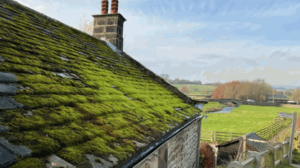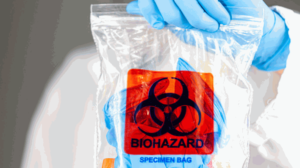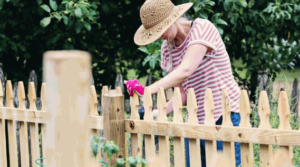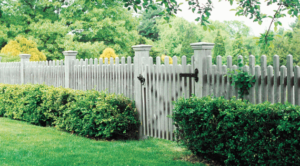Mould on roofs represents more than merely an aesthetic concern; it can pose significant risks to both the integrity of your home and your health. This guide provides a comprehensive examination of mould, including its formation and the potential dangers it entails. Readers will gain insights into how to identify mould on their roofs, the necessary steps for effective removal, and best practices for prevention. Whether addressing a current mould issue or seeking to protect your home from future occurrences, this guide offers valuable information to assist you, including expert advice from a professional.
What Is Mould?
Mould is a form of fungus that flourishes in damp, humid environments and is commonly found in various areas of the home, particularly indoors where moisture levels are elevated, such as ceilings or poorly ventilated spaces. It reproduces through microscopic spores that are not visible to the naked eye and can present significant health risks, particularly for individuals with respiratory conditions or allergies.
Understanding the nature of mould and its potential impact on the environment is essential for maintaining a healthy living space.
Look into: What Is A Biohazard

How Does Mould Form On Roofs?
Mould formation on roofs is frequently a result of excessive moisture accumulation, which can be attributed to factors such as inadequate ventilation, elevated humidity levels, and insufficient roof maintenance. In areas like Florida and Michigan, where humidity is prevalent, these conditions can be exacerbated.
When these conditions prevail, mould spores may settle and proliferate, ultimately compromising both the aesthetic appeal of the roof and its structural integrity over time.
What Are The Dangers Of Mould On Roofs?
The presence of mould on roofs presents multiple risks, not only to the structural integrity of the building but also to the health of its occupants, indicating a need for immediate mould removal and effective cleaning solutions.Mould can release allergens and irritants that may result in respiratory problems, allergic reactions, and other health complications, particularly among vulnerable populations such as children and the elderly.
Additionally, if left untreated, mould can cause substantial damage to the roof, leading to the need for costly repairs or renovations.

Can Mould On Roofs Cause Health Problems?
The presence of mould on roofs can indeed lead to various health issues, particularly impacting indoor air quality. Regular maintenance and ventilation improvements can mitigate these concerns.Exposure to mould spores may provoke respiratory problems and allergic reactions, resulting in symptoms such as coughing, sneezing, and even asthma attacks, especially in individuals who are sensitive.
Mould can aggravate pre-existing health conditions, particularly for those with asthma, chronic respiratory diseases, or compromised immune systems. A study published in the Journal of Allergy and Clinical Immunology indicates that exposure to mould is correlated with an increased incidence of asthma in children, with specific mould types identified as especially detrimental.
Along with respiratory issues, long-term exposure to mould can result in more severe allergic reactions, which may manifest as skin rashes and eye irritation. Experts advise homeowners to take proactive steps to address moisture issues and ensure proper ventilation to mitigate these risks.
- Mould exposure can exacerbate asthma symptoms.
- Allergic reactions vary based on individual sensitivity.
- Chronic exposure may lead to more severe health complications.
Regular inspections and timely remediation efforts are crucial to safeguarding health, particularly for sensitive individuals who may be at an elevated risk of developing serious respiratory conditions.
Can Mould On Roofs Damage The Structure Of The Roof?
Mould on roofs can result in significant structural damage if left unaddressed, as it has the potential to weaken roofing materials and contribute to premature deterioration. Over time, the moisture retained by mould can compromise the integrity of the roof, leading to leaks and incurring costly repairs.
Various roofing materials, including asphalt shingles, wooden shakes, and metal roofs, are particularly susceptible to the adverse effects of mould growth. For example, asphalt shingles may lose their protective granules, while wooden shakes are prone to rot, which can lead to further complications. If mould issues persist, they can escalate into more severe problems, affecting insulation and even the overall structural framework of the building.
This underscores the importance of prioritising regular maintenance and inspections to promptly identify and address mould concerns. A proactive approach includes:
- Cleaning gutters
- Checking for signs of moisture intrusion
- Ensuring proper ventilation in lofts and eaves
By implementing these measures, property owners can extend the lifespan of their roofing systems, reduce the likelihood of extensive repairs, and ultimately safeguard their investment while ensuring a safe living environment.

How To Identify Mould On Roofs?
Identifying mould on roofs necessitates a thorough inspection of surface areas where moisture is likely to accumulate, including valleys, eaves, and areas beneath overhangs. Homeowners should be vigilant for visible signs of mould growth, which may manifest as black or green patches.
Additionally, any unusual odours that could suggest the presence of mould should be noted, as early detection is crucial in preventing further damage.
What Does Mould On Roofs Look Like?
Mould on roofs typically manifests in several distinct appearances, ranging from dark spots and streaks to fuzzy or powdery patches, depending on the type of mould. Its colour may vary, appearing in shades of black, green, or even white, and it is often found in clusters in areas where moisture accumulates.
Visually, this mould can present in various forms, making it essential for homeowners to recognize their unique characteristics. For instance, black mould often appears as shiny, dark patches that may resemble a liquid-like texture, while green mould typically showcases a more vibrant, fuzzy appearance, indicating a thriving wet environment. Conversely, white mould frequently appears powdery and can resemble fine dust. Although its presence generally indicates a less severe issue, it still requires attention to prevent further complications.
- Black Mould: Shiny, dark patches with a liquid-like appearance.
- Green Mould: Fuzzy texture with a vibrant colour, suggesting moisture accumulation.
- White Mould: Powdery in nature, resembling fine dust; less severe but still concerning.
Identifying these forms is critical for early intervention and for maintaining the integrity of roofing structures.

How To Test For Mould On Roofs?
Homeowners can employ several methods to test for mould on roofs, including visual inspections and commercially available mould testing kits designed to detect spores in the air or on surfaces. These kits typically require swabbing a suspected area and sending the samples to a laboratory for analysis. Mould testing is a critical step in maintaining a healthy living environment, as it aids in identifying potential risks before they escalate.
Homeowners may also consider the following methods to ensure thorough mould detection:
- DIY Testing Kits: Various products available at home improvement stores enable individuals to collect samples and analyse them at home. Brands such as Mould Armor and Indoor Air Quality (IAQ) test kits offer clear instructions for use.
- Professional Inspections: Engaging certified mould inspectors ensures a comprehensive assessment, often utilising thermal imaging to identify hidden mould.
- Air Quality Monitors: Devices like the Airthings Wave Plus provide real-time air quality readings, assisting homeowners in monitoring levels of mould spores.
Consulting with professionals who specialise in mould remediation can also provide valuable insights into prevention and treatment options for any identified issues.
How To Remove Mould From Roofs?
The removal of mould from roofs is an essential maintenance task that may require various techniques and solutions, including chemical treatments like chlorine and natural remedies such as vinegar and baking soda, depending on the severity of the growth and the materials utilised in the roofing system.
Homeowners have the option to employ either chemical products or natural remedies to effectively eradicate mould and prevent its recurrence, thereby ensuring the longevity and safety of their roofing structure.
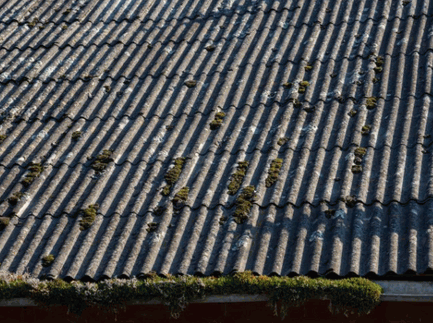
What Tools And Materials Are Needed To Remove Mould From Roofs?
To effectively remove mould from roofs, homeowners should gather essential tools and materials, which may include a pressure washer, scrub brush, protective gear, and cleaning products such as bleach, vinegar, and baking soda. Engaging with professional cleaning services like those offered by Daily Poppins can also ensure thorough mould removal. Each of these items is critical in ensuring a thorough cleaning process while also safeguarding the user’s health.
Acquiring the appropriate tools, such as those found on platforms like Amazon, enhances efficiency and ensures that the task is performed safely. For example, the pressure washer is instrumental in eliminating stubborn mould, providing a robust initial clean. A durable scrub brush complements this effort, facilitating detailed scrubbing in hard-to-reach areas. Protective gear is essential, as it shields individuals from potentially harmful spores and chemicals.
Homeowners, including those who have attended the Homebuilding & Renovating Show, should consider utilising the following:
- Cleaning Agents: Bleach is effective but requires careful handling; vinegar serves as a safer, natural alternative.
- Safety Equipment: Gloves, masks, and goggles are imperative to protect against toxins.
- Containers: Buckets are necessary for diluting and mixing cleaning solutions.
Ensuring proper safety measures not only protects the user but also contributes to a more effective mould remediation process, as recommended by cleaning experts.
What Are The Steps To Safely Remove Mould From Roofs?
The process of safely removing mould from roofs entails several critical steps, beginning with preparation that includes gathering the necessary tools and ensuring adequate ventilation. This is followed by the application of a suitable cleaning solution, gentle scrubbing of the affected areas, and thorough rinsing to eliminate all residues. Each of these steps is essential for achieving effective mould removal while minimising health risks.
Before implementing the techniques, it is imperative to prioritise safety by wearing appropriate protective gear, such as gloves, goggles, and a mask, to prevent inhalation of spores. Drawing on the experience of experts like Amy Willis, to commence the process, gather the following items:
- A bucket or sprayer for the cleaning solution, such as those available at Waitrose
- A soft-bristle brush or sponge for scrubbing
- Protective clothing, which can be sourced from Daily Poppins
- A water hose equipped with a spray nozzle
Subsequently, apply a cleaning solution specifically formulated for mould removal, such as products from Dettol, ensuring it can effectively penetrate the growth without harming the roof materials. Allow the solution to sit for the recommended duration to facilitate the breakdown of the mould. Following this, gently scrub the area to dislodge any remaining spores. Finally, use a hose to rinse thoroughly, ensuring all residues are washed away. This step is crucial in preventing future mould growth and maintaining the roof in optimal condition.
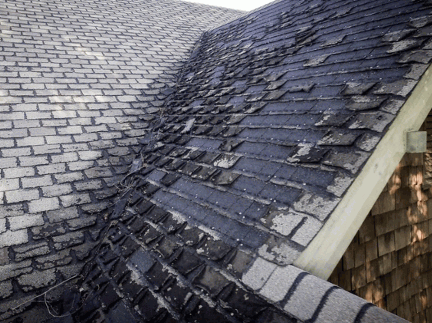
Are There Any Natural Remedies For Removing Mould From Roofs?
There are several natural remedies available for the removal of mould from roofs, as experienced by residents in Florida and Michigan, with vinegar and bicarbonate of soda being among the most effective options. These eco-friendly alternatives not only effectively eliminate mould but also reduce environmental impact when compared to chemical products.
When addressing mould issues, the application of these natural solutions can contribute to healthier living environments. For example, white vinegar acts as a potent anti-fungal agent. To utilise this remedy, one should spray undiluted vinegar onto the affected area and allow it to sit for a minimum of one hour before gently scrubbing the surface.
Bicarbonate of soda can be mixed with a small amount of water to create a paste, which can then be applied to mouldy surfaces and left for a few hours before rinsing off with water.
- Another option is to combine tea tree oil with water, which is known for its antimicrobial properties, as endorsed by Izabela Janiec.
- Hydrogen peroxide is also a viable choice; a 3% solution can be sprayed onto the mould and allowed to take effect for approximately 10 minutes before scrubbing.
It is essential to maintain proper ventilation and humidity levels, perhaps using Moisture Removal Trays or a Meaco 20L, to prevent future mould growth. Regular inspections for leaks and ensuring that roofs are cleaned can significantly minimise moisture accumulation.
How To Prevent Mould From Forming On Roofs?
Preventing the formation of mould on roofs is crucial for preserving the structural integrity and longevity of the roofing system. Effective prevention strategies include:
- Ensuring proper ventilation to reduce humidity levels,
- Conducting regular inspections, and
- Promptly addressing any water leaks.
These measures contribute to creating an environment that is less conducive to mould growth.
What Are The Best Practices For Roof Maintenance To Prevent Mould?
Best practices for roof maintenance aimed at preventing mould include conducting regular inspections for signs of damage ensuring that gutters and downpipes are free of obstructions, and maintaining adequate ventilation to facilitate moisture escape. These proactive measures can significantly reduce the risk of mould formation and extend the lifespan of the roof.
Along with these fundamental practices, homeowners should consider implementing routine maintenance strategies that adopt a comprehensive approach. Conducting annual inspections facilitates the early detection of issues such as tile deterioration or debris accumulation. To further enhance roof performance, homeowners may take the following actions:
- Inspect the loft to ensure proper airflow, which can assist in reducing humidity levels.
- Install or repair roof vents to enable the escape of warm air, thereby minimising moisture retention.
- Ensure that surrounding trees are adequately trimmed to prevent leaves from obstructing drainage pathways.
By integrating these detailed maintenance practices, homeowners can effectively protect their roofs from the adverse effects of mould while ensuring optimal durability.
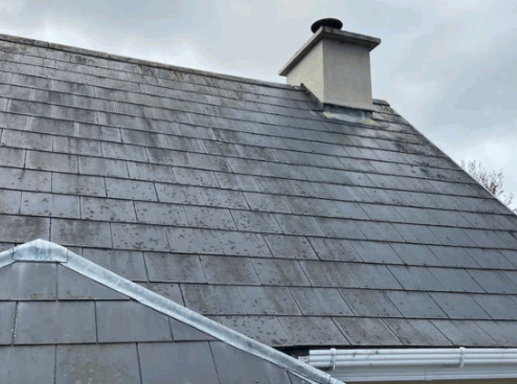
What Are The Signs That Indicate The Need For Professional Roof Cleaning?
Indicators that suggest the necessity for professional roof cleaning due to mould growth include visible patches of mould, discolouration of roofing materials, and the presence of a musty odour within the home. When homeowners observe these signs, it is imperative to seek professional assistance to ensure a comprehensive and safe cleaning process.
Along with these initial indicators, several other critical signs may warrant the need for professional cleaning services. Homeowners should remain vigilant for:
- Increased humidity in the attic or roof space.
- Peeling or bubbling paint on walls adjacent to the roof.
- Recurring respiratory issues among household members, which may be exacerbated by mould exposure.
Expertise is essential in effectively managing mould, as improper handling can release spores into the air, leading to additional contamination. Professional services not only employ advanced techniques for safe mould removal but also offer preventative measures to mitigate future growth, thereby ensuring a healthier living environment.


